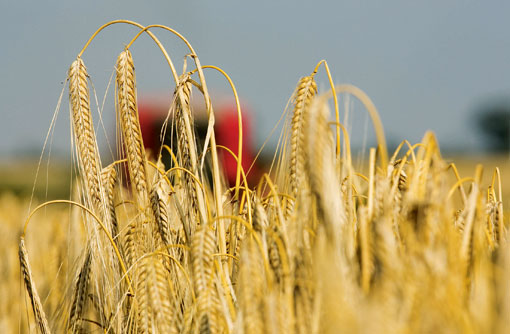New barley varieties struggle as older ones shine

Older winter barley varieties seem to have come to the fore this year, with quality bearing up much better under the difficult growing conditions than newer strains.
“There was massive aphid pressure in the autumn and early spring, with up to 25% losses in some winter barley crops,” said Agrii agronomist David Neale.
“Then we had drought followed by non-stop rain, which put a lot of pressure on the crop. There have been some poor reports on some of the hybrid varieties, particularly as you go further north, but the general picture is fair.”
Commercial crops had yielded slightly above average, at 6.4-6.7t/ha, according to an ADAS report, with light land fields performing the best. “The main quality issue is low specific weight, ranging from 53-68kg/hl, with the average close to 62-64kg/hl.”
Trial results also showed problems with low bushel weights, although yields actually came in 0.4t/ha below normal, at 8.4t/ha. Retriever performed the worst in terms of bushel weights and screenings, with Volume also struggling in the North.
However, six-row hybrids still topped the trials in terms of yield, with Volume’s five-year mean now at 109% and Element at 106%.
“KWS Meridian is the highest yielding-conventional six-row variety,” said Simon Oxley, Recommended List manager at HGCA.
“It hasn’t lived up to its 2010 yield, but it has performed well in the North.”
KEY POINTS
Highs
- Good-quality malting barley
- Above average winter barley yields
Lows
Poor bushel weights in hybrid feed varieties
Skinning a problem for Concerto and Propino
The two-row feed variety KWS Cassia did well, with a yield of 104% and high specific weights. “Feed candidate Glacier had a good year, and its yield on heavy land looks particularly impressive, at 111%,” said Mr Oxley.
Of the malting barley strains, newer varieties still had to prove their worth in malting tests, but Cassata and Flagon remained solid performers, with Pearl slightly lagging behind on yield, with an average score of 93%.
“The new variety SY Venture did really well, but in general the older varieties are perhaps more used to wetter years, as newer varieties have come through more droughty conditions,” said Stuart Shand, director at Gleadell Agriculture.
Malting quality had been extremely good, with low screenings, and nitrogen contents averaging 1.65%, compared with 1.9% last year. “Last year about 70% of samples failed – this year probably 70% have passed. I think the rain has just washed the nitrogen away.”
Spring barley harvest was less than halfway through as Crops went to press, but quality had been generally good, especially in East Anglia, said Mr Shand. Most varieties were averaging 1.64% nitrogen, but while screenings were low in the main, Tipple had struggled in the South.
“Spring barley is sold on 90% retention through a 2.5mm sieve – in the South Tipple is struggling to make 85%, which is not good enough for the main export market.”
Propino and Concerto had both suffered from skinning across the country, and maltsters in Scotland had lowered their intake requirements accordingly, said Simon Barry at Highland Grain.
“Harvest was 10 days later than normal, and a lot of samples came in at high moistures as farmers were keen to get crops off the fields.”
WEATHER WORRIES
Pea and bean crops overcome rain
Weather could hardly have been worse for pea and bean crops this year, but some crops have still managed to produce the goods against the odds.
“Pea yields have been very variable – there have been some decent crops in the South and South East, where it was drier, but they aren’t so good in Lincolnshire,” said Stephen Belcher, principle technical officer at PGRO.
Harvest was three to four weeks behind normal, with no beans cut as Crops went to press.
“It’s been a real challenge from sowing onwards – and it’s the local weather that will make the difference to yields at the end of the day.
Lighter land has coped better, with root disease proving a problem on heavier, wetter ground,” he added.
Pea yields ranged from under 2.5t/ha in Lincolnshire to 3t/ha in Essex, said Phil Rix, pulse manager at Dunns. Quality was also questionable in lodged crops, which were susceptible to staining.
Beans were standing better, but cool wet conditions during pollination meant pod numbers were dramatically down, he added.
“However, it should be a low Bruchid year, and anyone who has good-quality crops should see good market demand.”

